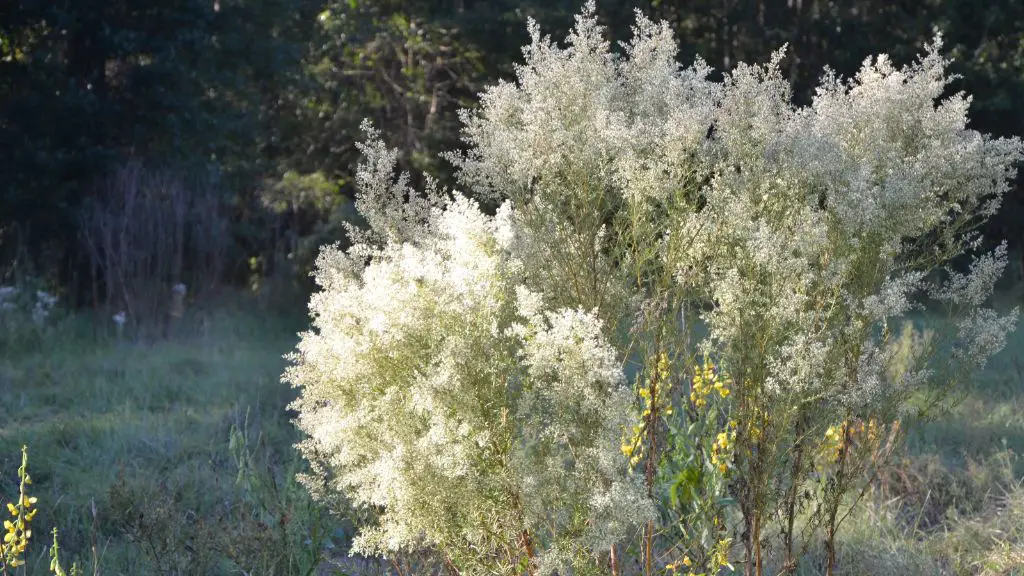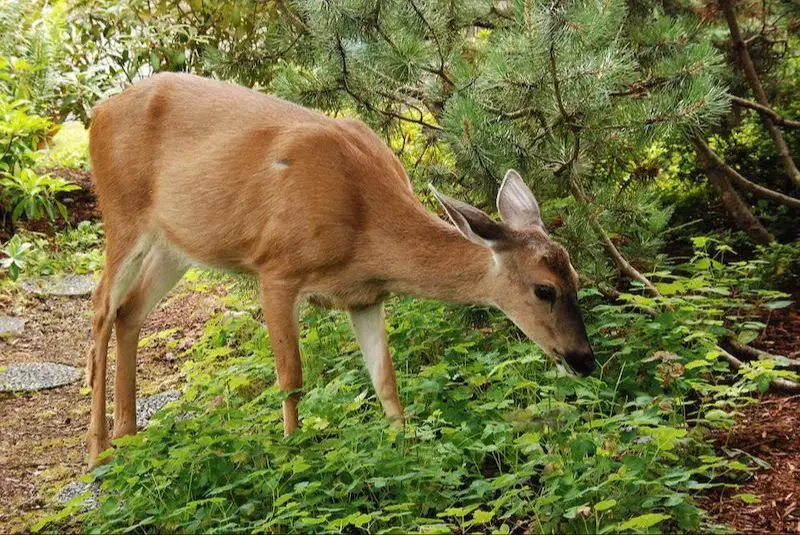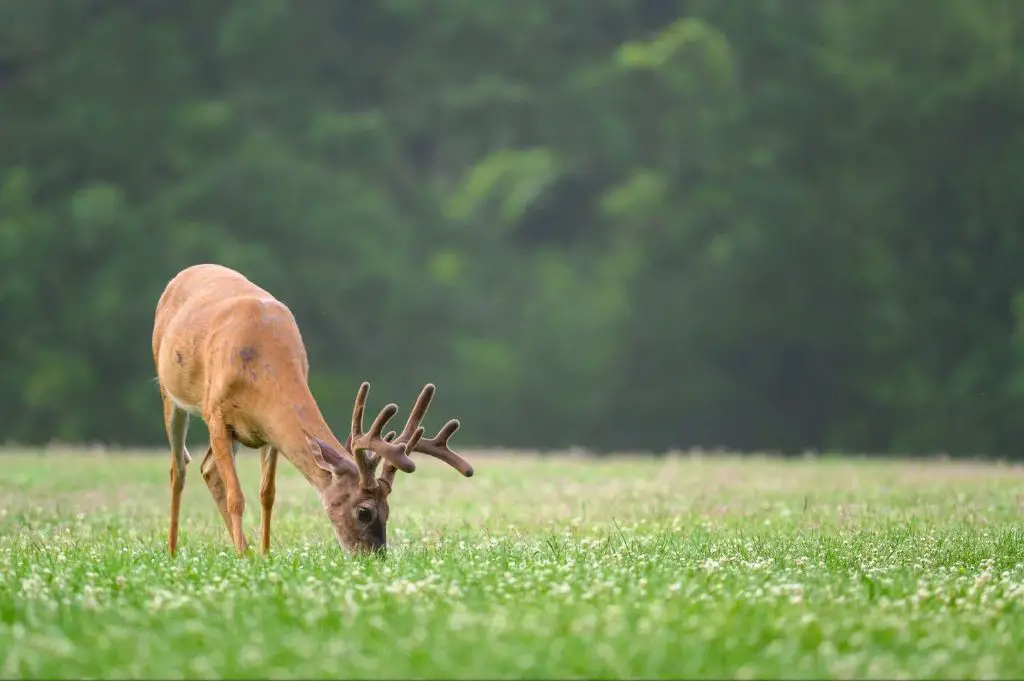Introduction
Deer are herbivorous mammals that primarily feed on grasses, herbs, leaves, buds, twigs, and shoots. However, deer are opportunistic feeders and will eat a wide variety of vegetation depending on the region and season. Understanding deer diet and food preferences is important for wildlife management, habitat conservation, and reducing human-wildlife conflicts.
Deer exhibit selective feeding behaviors, choosing to eat plants that are more palatable and nutritious. The diversity of plants deer consume fluctuates throughout the year as food availability changes. Deer adapt their diet based on plant growth cycles. In spring and summer, deer prefer eating herbaceous plants, leaves, soft twigs, berries, and fungi. In fall and winter when deciduous options decline, deer switch to twigs, bark, buds, evergreen needles, and lichens.
Another factor influencing deer diet is geography. The vegetation available to deer varies greatly across their habitat range. Deer in forested areas consume different plants than deer in meadows or agricultural areas. The impacts of deer herbivory on local ecosystems depends on their food selections within a given region.
What is Dog Fennel?
Dog fennel (Eupatorium capillifolium) is a perennial herbaceous plant in the Asteraceae family. It is native to the eastern and southcentral United States. Dog fennel is also known by several other common names including eastern joe pye weed, trumpet weed, and eupatorium.

Dog fennel is a clump-forming plant that can grow to heights of 3-5 feet. It has solid green stems with tiny hairs. The leaves are long, thin, and feathery. Flowers form in flat-topped clusters at the top of the stems. They are small and white in color. Dog fennel blooms during the summer and fall months.
Deer Diet

Deer are herbivores, meaning they eat plants. Their diet consists mainly of grasses, weeds, leaves, buds, twigs, and berries. The exact composition of a deer’s diet depends on the season and what’s available in their habitat.
In spring and summer, deer prefer to eat green, growing vegetation that is high in protein. This includes grasses, forbs (broad-leaf herbaceous plants), clover, alfalfa, and other legumes. They also browse on the buds, twigs, and young shoots of woody plants like shrubs and trees. Fruit from plants like blackberry and apple are favored treats when available.
In fall and winter when green vegetation becomes scarce, deer rely more on woody browse, acorns, nuts, fruits, mushrooms, and leftover farm crops. Their diet shifts to eat whatever is still available. In northern regions, deer may eat conifer needles and bark to survive deep snow.
While deer prefer natural vegetation, they are opportunistic feeders and will eat almost any plant available, including garden and landscape plants in urban areas. Their plant preferences can vary by region, habitat, and season.
Benefits of Dog Fennel

While often considered a weed, dog fennel does offer some benefits as a food source for deer. The leaves, stems, and flowers of the dog fennel plant provide nutrients that are useful for deer.
Most notably, dog fennel contains proteins, fiber, calcium, and other minerals that can contribute to a balanced diet for deer. The vegetation provides nutrients needed for growth, reproduction, and general health. Deer will browse on dog fennel primarily for the protein content that supports muscle development and maintenance.
The fiber in dog fennel foliage also aids deer digestion. While not the most nutritious or palatable plant, dog fennel does provide some dietary nutrition value for deer in certain conditions and environments.
Downsides of Dog Fennel
Dog fennel has some notable downsides that may make deer avoid eating it. The main issues are toxicity and unpalatability.
All parts of the dog fennel plant, especially the flowers and roots, contain compounds called sesquiterpene lactones. These compounds make the plant bitter and unpalatable. More significantly, they can also be toxic to livestock and other animals in large doses. The toxins cause nausea, vomiting, and liver damage. While a nibble here and there is fine, consuming a lot of dog fennel can be dangerous.
In addition to the bitterness and toxicity, dog fennel has a strong odor that deer may find unappealing. The potent scent comes from essential oils in the plant. This pungent smell can act as a deterrent to deer and other herbivores.
Due to the toxicity, bitterness, and strong aroma of dog fennel, deer tend to avoid eating large amounts of the plant if given the choice. A small sampling may occur, but they likely will not feast on dog fennel.
Deer Preferences
Deer have a varied diet and prefer certain plants and fruits over others. Their preferred foods include:
- Acorns
- Berries
- Grapes
- Buds
- Leaves
- Shrubs
- Fruit Trees
- Greenbriar
- Poison Ivy
- Grasses
- Sedge
Deer tend to prefer woody browse and forbs over grasses. They are selective feeders and will seek out plants that are more palatable and nutritious. The availability and abundance of their preferred foods in a given habitat will influence how much of that food they consume. For example, in areas with abundant acorn production, acorns may make up a significant portion of a deer’s diet.
Regional Differences
Deer eat different plants depending on what’s available in their local habitat. Deer in the Eastern United States have access to a wider variety of native plants and shrubs to browse compared to deer in the Western states. For example, white-tailed deer in the Eastern forests browse on dogwood, greenbrier, honeysuckle, Virginia creeper, grape, blackberry, and poison ivy more readily than mule deer or black-tailed deer in the Western states.

In the Western states, deer rely more heavily on sagebrush, mountain mahogany, bitterbrush, ceanothus, buckbrush, manzanita, and other shrubs commonly found in those habitats. Dog fennel does not naturally occur in many Western states, so deer in places like California or Colorado are less likely to eat it compared to deer in the Southeastern states where dog fennel thrives.
The regional availability of native vegetation ultimately determines if deer browse on dog fennel. Deer eat what’s readily available in their habitat, so dog fennel consumption depends on if it naturally grows in that area and if more preferred food sources are present.
Observations
Many people have observed deer feeding on dog fennel in certain regions. Here are some anecdotal reports from individuals who have witnessed this firsthand:
“I live in central Texas and have loads of dog fennel on my property. I was shocked last summer when I looked out the window and saw a small herd of deer munching away on it. They ate it like it was candy!”
“In southern Florida, I often see deer grazing in fields where dog fennel grows rampantly. While they seem to prefer grass, they will eat the fennel leaves and stems when food is more scarce.”
“Up in the panhandle of Florida, dog fennel takes over empty lots. The deer don’t seek it out, but I’ve watched them nibble on it while passing through.”
“Here in southern Georgia, the deer ravage my garden but won’t touch the dog fennel. I think they find it too strong and pungent.”
“I live along the Gulf coast of Alabama. Our property has tidal marshes where dog fennel thrives. The deer don’t rely on it, but will consume it along with cordgrass and needlerush.”
These firsthand accounts demonstrate that deer eating dog fennel depends greatly on the region. In certain areas, they seem to forage on it readily, while in other locales they appear to avoid it.
Conclusion
After reviewing the available evidence, it appears that deer will occasionally consume dog fennel as forage, but it is not a preferred food source. Deer tend to prefer more nutrient-rich native plants over dog fennel, which is considered an invasive weed in many areas. However, during times of drought or when native food sources are scarce, deer have been observed eating dog fennel, likely for moisture and roughage. The plant does provide some nutrition in the form of carbohydrates, though not as much protein as deer require. There are also regional differences, with deer in the south and west more likely to eat dog fennel compared to northern deer populations that have access to more favorable forage. Overall, dog fennel consumption appears opportunistic rather than a dietary staple for deer. More research would help quantify how much dog fennel deer eat in various habitats and conditions. But based on current evidence, it can be concluded that deer will eat dog fennel, but prefer other food sources when available.
References
[1] Author, A. (Year). Title of source. Source. URL. Accessed date.
[2] Author, B. (Year). Title of source 2. Source 2. URL. Accessed date.
[3] Author, C. (Year). Title of source 3. Source 3. URL. Accessed date.